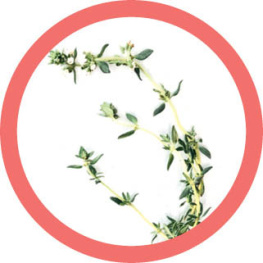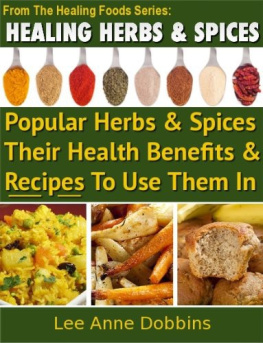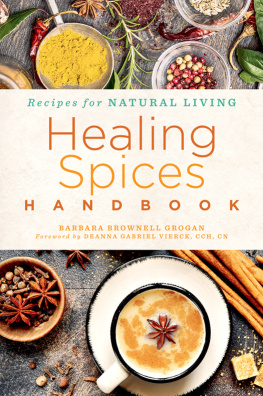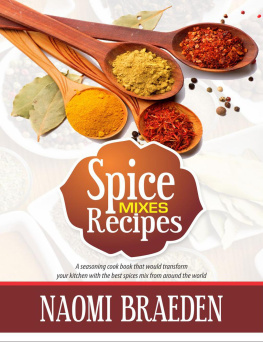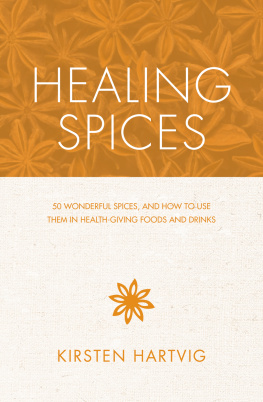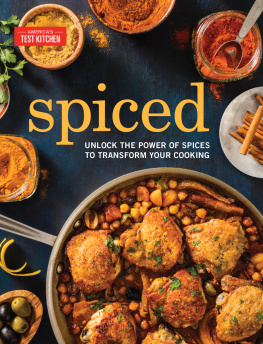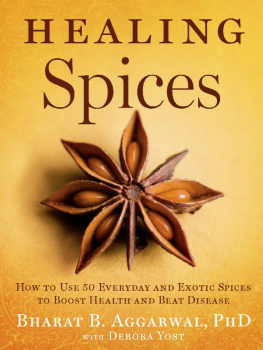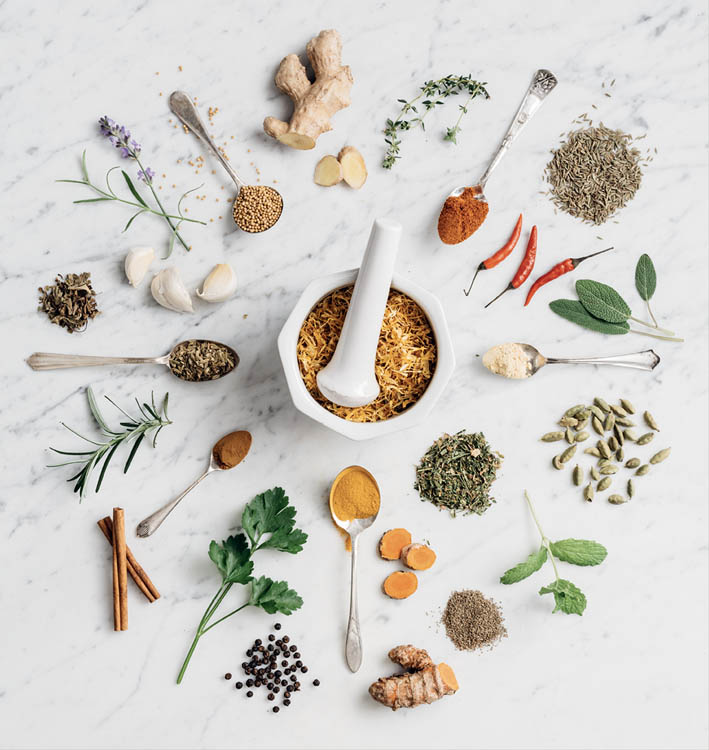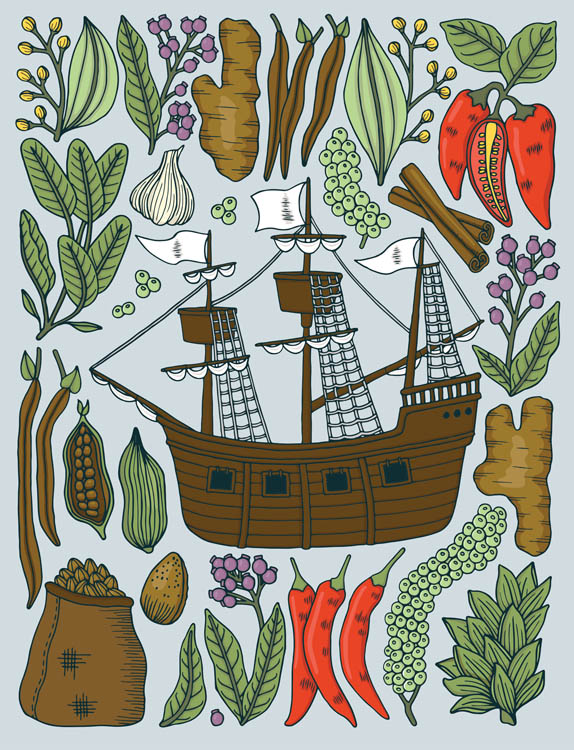The mission of Storey Publishing is to serve our customers by publishing practical information that encourages personal independence in harmony with the environment.
Edited by Carleen Madigan and Liz Bevilacqua
Art direction by Ash Austin
Book design by Kimberly Glyder
Text production by Jennifer Jepson Smith
Indexed by Samantha Miller
Cover photography by Michael Piazza Photography/SAINT LUCY Represents, except for back (dished spices) by Mars Vilaubi
Interior photography by Michael Piazza Photography/SAINT LUCY Represents
Additional photography by Bevin Clare,
Photo styling by Ann Lewis
Food styling by Ash Austin
Cover and interior illustrations, including backgrounds, by Andie Hanna
Diagram page by Ash Austin
Text 2020 by Bevin Clare
Ebook production by Kristy L. MacWilliams
Ebook version 1.0
June 9, 2020
All rights reserved. No part of this book may be reproduced without written permission from the publisher, except by a reviewer who may quote brief passages or reproduce illustrations in a review with appropriate credits; nor may any part of this book be reproduced, stored in a retrieval system, or transmitted in any form or by any means electronic, mechanical, photocopying, recording, or other without written permission from the publisher.
The information in this book is true and complete to the best of our knowledge. All recommendations are made without guarantee on the part of the author or Storey Publishing. The author and publisher disclaim any liability in connection with the use of this information.
Storey books are available at special discounts when purchased in bulk for premiums and sales promotions as well as for fund-raising or educational use. Special editions or book excerpts can also be created to specification. For details, please call 800-827-8673, or send an email to .
Storey Publishing
210 MASS MoCA Way
North Adams, MA 01247
www.storey.com
Library of Congress Cataloging-in-Publication Data
Names: Clare, Bevin, author.
Title: Spice apothecary / Bevin Clare.
Description: North Adams : Storey Publishing, 2020. | Includes bibliographical references and index. | Summary: Author Bevin Clare combines her training in herbalism and nutrition to guide readers in a return to the kitchen spice cabinet for better health and healingProvided by publisher.
Identifiers: LCCN 2019056609 (print) | LCCN 2019056610 (ebook) | ISBN 9781635860832 (paperback) | ISBN 9781635860887 (hardcover) | ISBN 9781635860849 (ebook)
Subjects: LCSH: SpicesTherapeutic use. | SpicesHealth aspects. | Cooking (Herbs)
Classification: LCC RM666.H33 C623 2020 (print) | LCC RM666.H33 (ebook) | DDC 615.3/21dc23
LC record available at https://lccn.loc .gov/2019056609
LC ebook record available at https://lccn.loc .gov/2019056610
This publication is intended to provide educational information for the reader on the covered subject. It is not intended to take place of personalized medical counseling, diagnosis, and treatment from a health professional.
to my family, with whom i wish to travel all the world and taste all the spices
Contents
Preface
The Medicine of Spices
I have been asked hundreds of times , What do you take every day to stay healthy? I imagine people have visions of me with cauldrons of bubbling medicines, or bowls of rainbow-colored capsules, or dozens of amber tincture bottles lined up on my kitchen table. When I tell people that the only medicines I take every day are things like garlic, cinnamon, black pepper, and basil, I can sometimes see a hint of disappointment. Just simple spices, when they thought they might discover the secret to youth or immortality.
But this is an underestimation of the power of culinary herbs and spices. How could something that tastes good be used medicinally? Could something that our grand-mothers and grandfathers cooked with every day be fundamental to good health?
What weve forgotten is, our bodies evolved in tandem with the plants that offer an abundance of spices and herbs. These spices and herbs were used to make (often unpalatable) food palatable as well as for food preservation and cultural traditions. The distinction between what was considered food and medicine was not always so starkly drawn.
Today, however, as people reach for bland and salty processed foods, we see less use of culinary spices and more prevalence in the conditions these spices can actually prevent and treat. While this may not be a causal relationship, I do have a clear observation: We need the medicine of spices.
To compound the issue, holistic, integrative, or herbal medicine tends to be expensive and inaccessible to the general population. What was once a simple daily practice, herbal medicine has become the medicine of the elite, with fancy products in pricey bottles. And while there are many wonderful companies and products out there, herbal medicine does not need to be expensive or exclusive. In fact, the more you can taste and smell and touch and grind and sift the medicines you are using, the better. Backed by a plethora of scientific evidence supporting the beneficial properties of using herbs and spices for health, I am making the call for more people to use medicinal spices every day.
Finally, I want to say, this is the medicine of families, communities, and traditional cultures. A whiff of celebratory cardamom can conjure the joys of a wedding; the heady scent of fresh rosemary conveys a sense of elegance. While children sprinkle cinnamon in their hot cocoa, their grandparents can add it to a dinner dish to support cardiovascular health.
Spices are our perfect medicine. They are my daily tonic, my connection to past and present. They also bring joy to the food I prepare for my family. I invite you to integrate spices into your diet, and to enjoy the health-boosting deliciousness that they bring.
Bevin Clare
chapter | 1 |
Our Connection to Spices |
Our senses are attuned to the taste, touch, and smell of spices. Across the globe, people have made use of spices as food flavorings, medicines, and even as valued cultural totems. And despite an ever-growing industry of synthetic flavors, we return again and again to spices for use as fragrant foods and as medicines. |
The Global Spice Trade
We have long been tantalized by spices. They have been more valuable than gold, the topic of wild lore, and the glories of great societies. They have incited us to cross vast oceans, fight wars, and seek treasures. Many of the most important trade routes in the world were developed for trading spices specifically, among the Middle East, India, and China and their connections to Europe.

